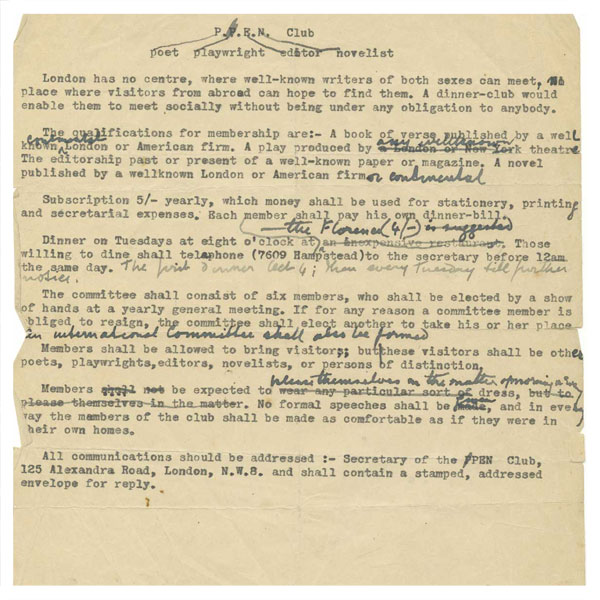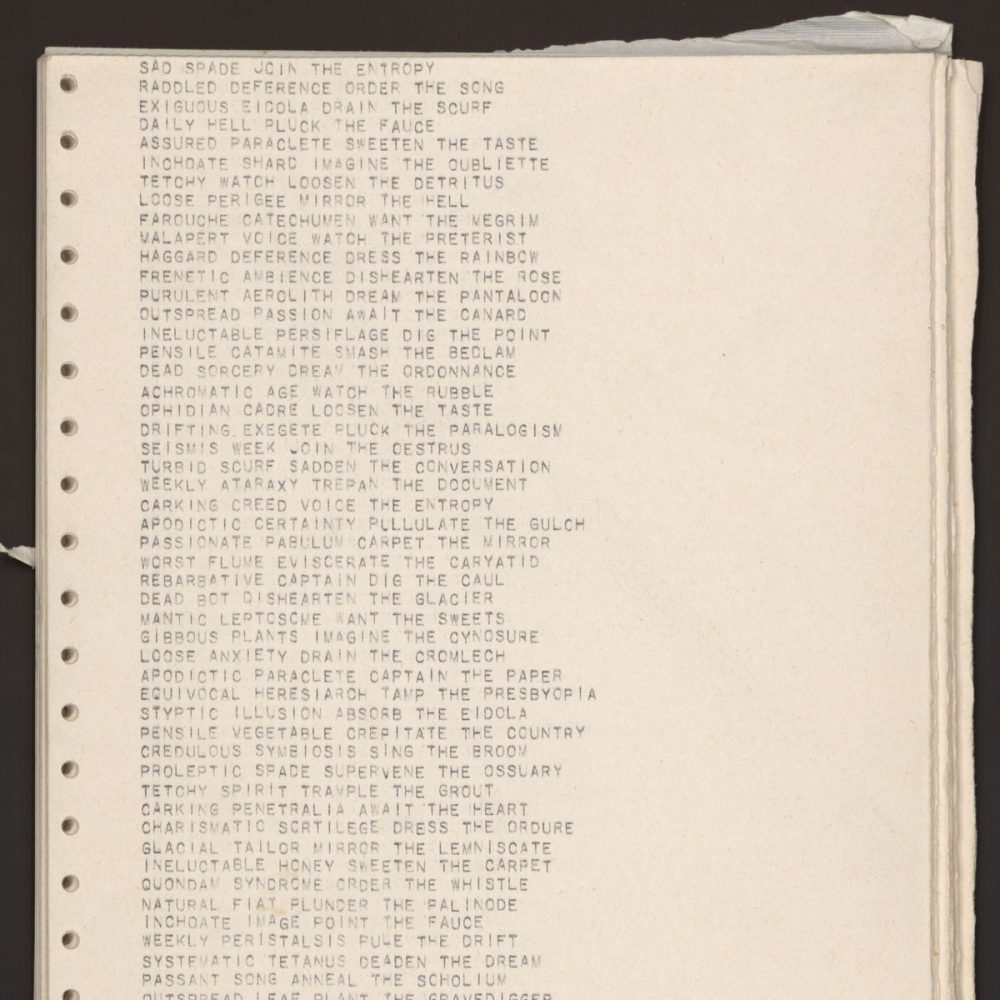Recently I was lucky enough to spend four months digging through the PEN (Poets Essayists and Novelists Club) archive at the Harry Ransom Center. [Read more…] about Viewing the twentieth century via the PEN archive
Andrew W. Mellon Foundation Research Fellowship Endowment
The computer poetry of J. M. Coetzee’s early programming career
Writer J. M. Coetzee’s early poetry is almost undecipherable. That’s because it was written in computer code.
Coetzee’s global reputation rests on his literary output, for which he received a Nobel Prize in 2003. Before he embarked on a career as a scholar and writer, the South African–born writer was a computer programmer in the early years of the industry’s development (1962–1965). I believe that this experience, while short, was vital for the development of Coetzee’s writerly project. While visiting the Ransom Center on a research fellowship, I examined Coetzee’s papers, which offer tantalizing clues about his neglected “other career.” [Read more…] about The computer poetry of J. M. Coetzee’s early programming career
Application process opens for Ransom Center’s fellowships
The Harry Ransom Center invites applications for its 2015–2016 research fellowships. More than 50 fellowships will be awarded for projects that require substantial onsite use of the Center’s collections, supporting research in all areas of the humanities, including literature, photography, film, art, the performing arts, music, and cultural history.
Information about the fellowships and the application process is available online. The deadline for applications, which must be submitted through the Ransom Center’s website, is January 15, 2015, at 5 p.m. CDT.
All applicants, with the exception of those applying for dissertation fellowships, must have a Ph.D. or be independent scholars with a substantial record of achievement.
The fellowships range from one to three months, with stipends of $3,000 per month. Also available are $1,200 or $1,700 travel stipends and dissertation fellowships with a $1,500 stipend.
The stipends are funded by endowments and annual sponsors, including the Andrew W. Mellon Foundation Research Fellowship Endowment, the Dorot Foundation Postdoctoral Research Fellowships in Jewish Studies, the Marlene Nathan Meyerson Photography Fellowship Endowment, the Creekmore and Adele Fath Charitable Foundation, the Robert De Niro Endowed Fund, the Woodward and Bernstein Endowment, the American Society for Eighteenth-Century Studies, the South Central Modern Language Association, and The University of Texas at Austin’s Office of Graduate Studies, Schusterman Center for Jewish Studies, and program in British Studies.
Since the fellowship program’s inauguration in 1990, the Center has supported the research of more than 900 scholars through fellowship awards. In conjunction with the program’s 25th anniversary, the Center seeks to raise $25,000 to establish a Fellowship Anniversary Endowment to support the growth of the fellowship program and the next generation of humanities scholars.
Image: Attributed to Tsukioka Yoshitoshi, [Geisha having her photograph taken], not dated, color woodblock; Alfred Junge, scene conception for The Barretts of Wimpole Street, 1956; Fred Fehl, still featuring Sara Yarborough from a production of Cry, 1974; Clement Smith & Co., Hercat’s New and Startling Illusion, 1888; Julia Margaret Cameron, [May Prinsep], 1870, albumen print.


![Image: Attributed to Tsukioka Yoshitoshi, [Geisha having her photograph taken], not dated, color woodblock; Alfred Junge, scene conception for The Barretts of Wimpole Street, 1956; Fred Fehl, still featuring Sara Yarborough from a production of Cry, 1974; Clement Smith & Co., Hercat’s New and Startling Illusion, 1888; Julia Margaret Cameron, [May Prinsep], 1870, albumen print.](https://sites.utexas.edu/ransomcentermagazine/files/2014/10/2015_large.jpg)